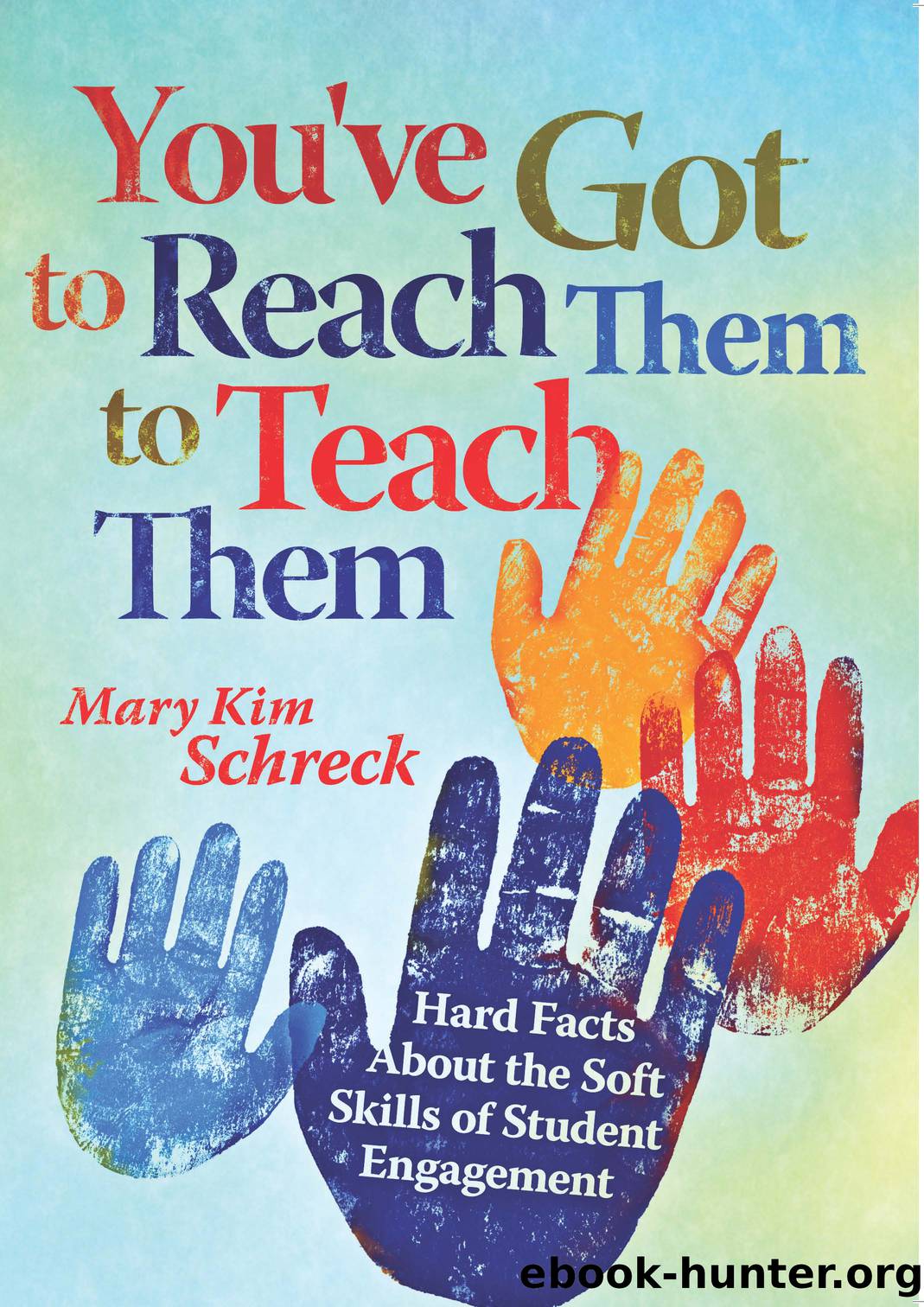You've Got to Reach Them to Teach Them by Schreck Mary Kim; & Schreck

Author:Schreck, Mary Kim; & Schreck
Language: eng
Format: epub
Publisher: Solution Tree
Published: 2011-08-15T00:00:00+00:00
Changing the Belief That Intelligence Is Static
A powerful change in attitude capable of increasing a personâs level of effort, motivation, and consequent achievement is the change from believing that a personâs intelligence is fixed to understanding that a personâs intelligence can grow and increase. If a child believes that he or she just isnât smart and never will be, thereâs very little reason to exert effort.
Carol Dweck, a leading researcher in the field of motivation, studied these fixed and growth mindsets in seventh-grade students for a two-year period and stated, âWe saw among those with the growth mindset steadily increasing math grades over the two years. But that wasnât the case for those with the so-called fixed mindset. They showed a decrease in their math gradesâ (Trudeau, 2007).
Dweck (2008) then wondered if it were possible to change this fixed mindset by educating children about how brains grow when a person thinks something new. In her next study, children were taught how the brain grows branches of connections, called dendrites, making the point that the children were capable of getting smarter, that being smart was definitely within their control.
After this mini neuroscience course on the workings of the brain, Dweck said, when students studied, they visualized little dendrites growing in their heads. Soon they changed their attitudes toward the brain. No longer did they see it as a fixed, static blob; it was now an ever-growing muscle that became stronger and stronger when exercised. This knowledge changed their motivation. Dweck found that âthe students were energized by the idea that they could have an impact on their mind.â She went on to speak about a young boy who was the âringleader of the troublemakersâ who, âwith tears in his eyes, said, âYou mean, I donât have to be dumb?â â (Dweck, 2008, p. 219).
Another important insight that came from these studies is how to deal with high-achieving students who have lost their motivation. If children are praised too often for being smart, they will want to keep that status and will often balk at taking risks for fear of making a mistake and looking foolish (Dweck, 2008). Many teachers of high-track/honors students or gifted students are well aware of this side of the motivation coin.
One way to praise an intelligent child is to praise that childâs efforts, not his or her intelligence. A teacher had a banner over her blackboard that read: âIf you are not out of your comfort zone, you arenât learning anything!â During particularly challenging work, she would ask the class, âAre you out of your comfort zone yet?â And when they groaned, âYes,â she would applaud their efforts and tell them how well they were doing. Breaking down the attitude that learning has to be comfortable and that any uncomfortable experience is to be avoided allows students to extend their efforts longer and sustain their levels of perseverance dramatically.
Download
This site does not store any files on its server. We only index and link to content provided by other sites. Please contact the content providers to delete copyright contents if any and email us, we'll remove relevant links or contents immediately.
Macmillan Primary Grammar 2 Pupil's Book by Unknown(388)
Figuring Out Fluency in Mathematics Teaching and Learning, Grades K-8 by Jennifer M. Bay-Williams & John J. SanGiovanni(355)
The Principal's Guide to Curriculum Leadership by Sorenson Richard D.;Goldsmith Lloyd M.;Mendez Zulma Y.;Maxwell Karen T.;(282)
English Grammar Practice--The Noun by Roxana Nastase(241)
Learning from Accidents 3rd ed by Trevor Kletz (2001)(238)
Harnessing Technology for Deeper Learning by Scott McLeod(229)
Text-Dependent Questions, Grades K-5 by Douglas Fisher & Nancy Frey & Heather Anderson & Marisol Thayre(216)
A Guide to Curriculum Mapping by Hale Janet A.;(212)
English Language Program Administration by Unknown(205)
How to Do Everything with Google Tools by Unknown(198)
Deep Change Leadership by Reeves Douglas;(197)
The Grammar Teacher's Activity-a-Day by Jack Umstatter(185)
The Power of SMART Goals by Conzemius Anne;O'Neill Jan; & Anne Conzemius(183)
Aligning and Balancing the Standards-Based Curriculum by Squires David A.;(163)
Beyond the RTI Pyramid by Bender William N.;(163)
Using Data to Close the Achievement Gap by Johnson Ruth S.;(158)
Differentiated Instructional Strategies for the Block Schedule by Gregory Gayle H.;Herndon Lynne E.; & Lynne E. Herndon(157)
Using Equity Audits to Create Equitable and Excellent Schools by Skrla Linda E.;McKenzie Kathryn B.;Scheurich James Joseph;(154)
You've Got to Reach Them to Teach Them by Schreck Mary Kim; & Schreck(143)
